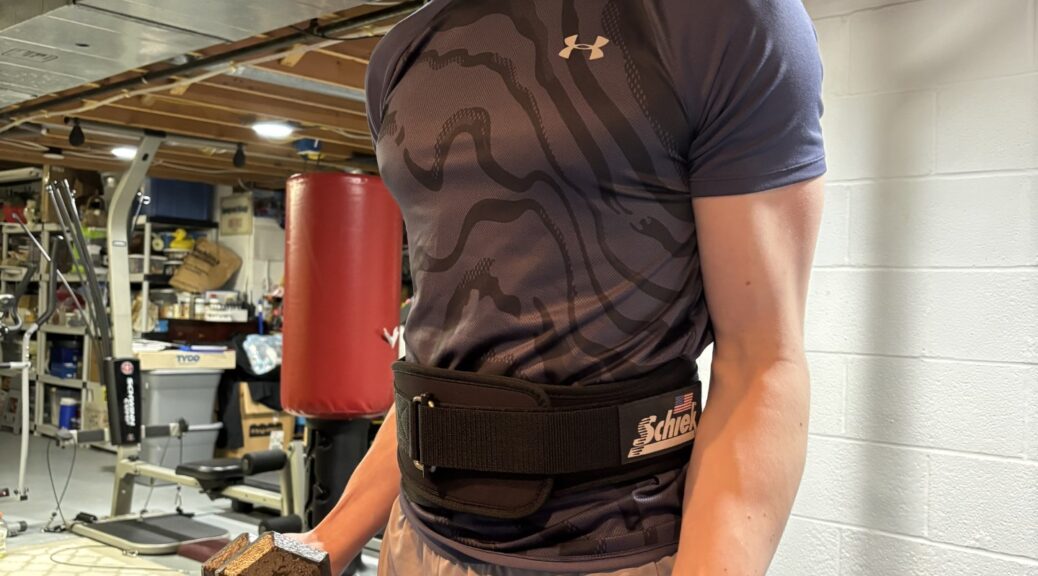
Lifting Belts, Are They Actually Worth It?
Weightlifting belts have been used for centuries. They have been thought to provide the body with stability and prevent injuries. However, that might not be the case.
“Using the belt for deadlifting makes me feel better,” Bodybuilder Xavier Raineri said.
“They (external factors) can definitely be beneficial in certain times and places,” Kent State Exercise Science Professor Meghan Magee said.
Lifting belts are thought of and advertised as injury preventers. Although, Kent State Exercise Science Professor Jacob Barkley has his doubts. “With the fitness industry there are often claims that are made that are simply untrue or significantly exaggerated,” Barkley said.
“With the fitness industry there are often claims that are made that are simply untrue or significantly exaggerated,” Barkley said.
“Some people use them (external factors) for injury prevention, and that I don’t know if they are,” Barkley said.
Not only are belts effecting lifters, but also people in the workplace. According to the CDC, “There is a lack of scientific evidence that back belts work. Workers wearing back belts may attempt to lift more weight than they would have without a belt. A false sense of security may subject workers to greater risk of injury.”
“When people start using them (external factors) for over five reps, that’s where it’s not really working, and it’s not really helping them do what they need to do,” Magee said. “A weightlifting belt in general, it’s helping them maintain that core, which is good, but then if they use that for lower intensity lifts, then they’re not learning how to maintain their own.”
“When people start using them (external factors) for over five reps, that’s where it’s not really working,” Magee said.
There are many different training styles that are used in the gym. Bodybuilders focus on toning muscle, powerlifters focus on gaining muscle, calisthenics focuses on controlling bodyweight and athletes focus on training specific movements that translate to activities.
There is no right or wrong training style, it all depends on what your goal is. However, one specific training style benefits from using external factors. “Anybody that’s gonna be training low reps, high weight, where you’re trying to maximize the lift,” Barkley said.
Using a belt on occasion is not a bad thing. The problems stem from overusing them. “Social media has almost persuaded people into thinking that using these (external factors) are required,” Raineri said.
The problem of overusing these factors is not just relevant in belt usage. “Smelling salts definitely have an effect, but it only lasts like 15 seconds,” Magee said. “The physical performance (i.e., the center of mass of the jumping height) was not affected by the type of brace or sleeve,” according to the National Library of Medicine.
People are using these external factors because they make it easier to lift more weight. However it is unknown how much that these factors even help build muscle, as you still won’t be able to do the weight without these factors. “There’s evidence supporting that it (external factors) can increase strength in terms of mass moved,” Barkley said. Why is this a bad thing though?
“Indirectly you could put yourself at greater risk for injury if you are moving a heavier load. The more weight your lifting, the greater the risk of injury,” Barkley said. “The greater the load your using, the greater the risk of injury and it’s all relative. If your training at 95% max, the risk that your gonna hurt yourself is gonna go up. Regardless of what the actual poundage is, because you can get a little out of line in terms of form, maybe your a little dehydrated or you’ve got a tiny injury that your not aware of next thing you know your (possibly) tearing a pec,” Barkley said.
Orthopedic Surgery and Sports Medicine agrees with Barkley, “You may feel tempted to show off how much you can lift, but if you take on more than your body can handle, you’ll be putting excessive pressure on your muscles and joints, causing them to hurt after. You can even end up pulling or tearing muscles as a result.”
Obviously nobody wants to be hurt in the gym no matter what, but using these external factors can lead to injury. They have their benefits including helping brace your body and improving stability but the cons may outweigh the pros.
To some people including athletes, an injury in the gym could mean a huge life setback for them. “Yeah I’m afraid of injury, I’m too far along that an injury would set me back too far,” Malone Baseball Player Anthony Bartiromo said.
“Yeah I’m afraid of injury, I’m too far along that an injury would set me back too far,” Malone Baseball Player Anthony Bartiromo said.
Nobody wants to get hurt in the gym but it happens unfortunately. You could still get injured avoiding these external factors, however the risk of injury increases when you use them excessively.
No matter what your goals are, it is best to stay safe and be able to continue to push towards your goals.


